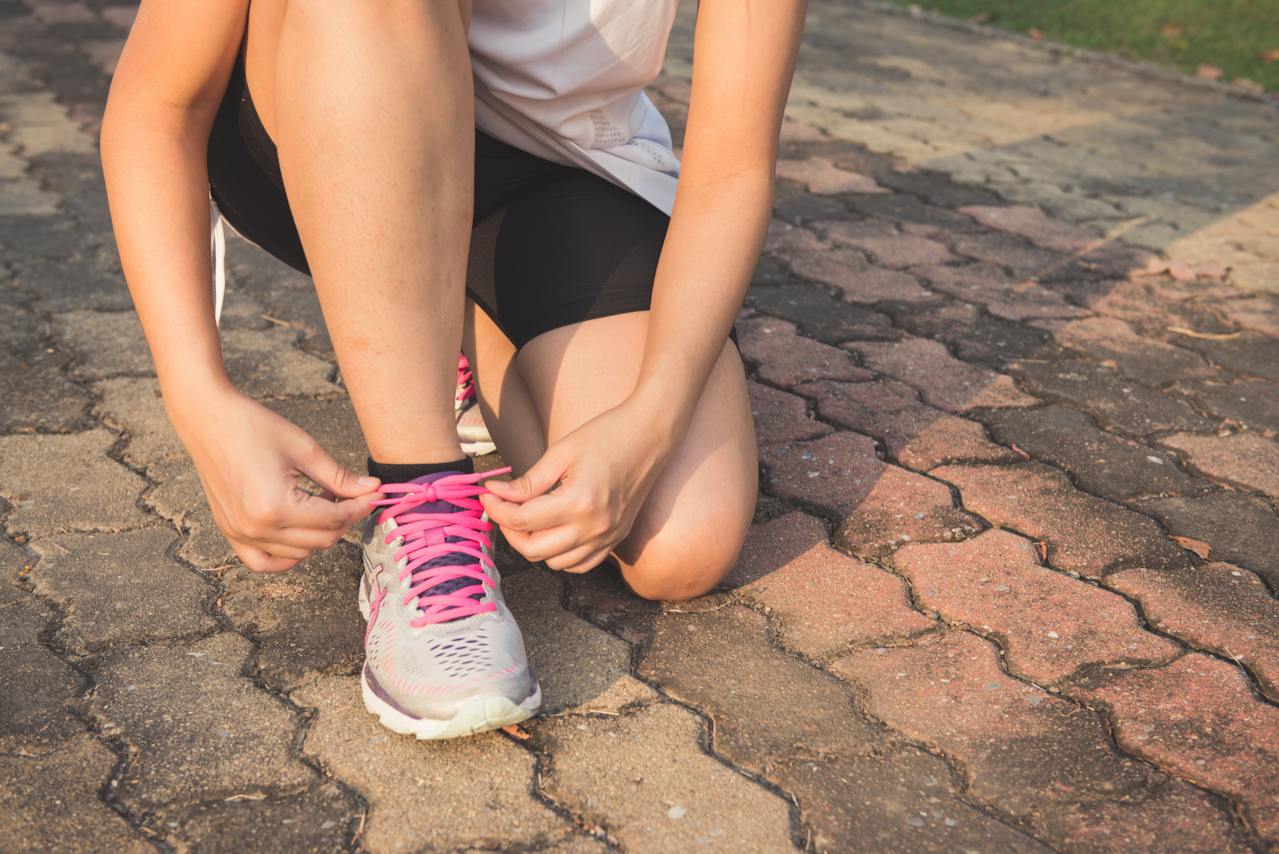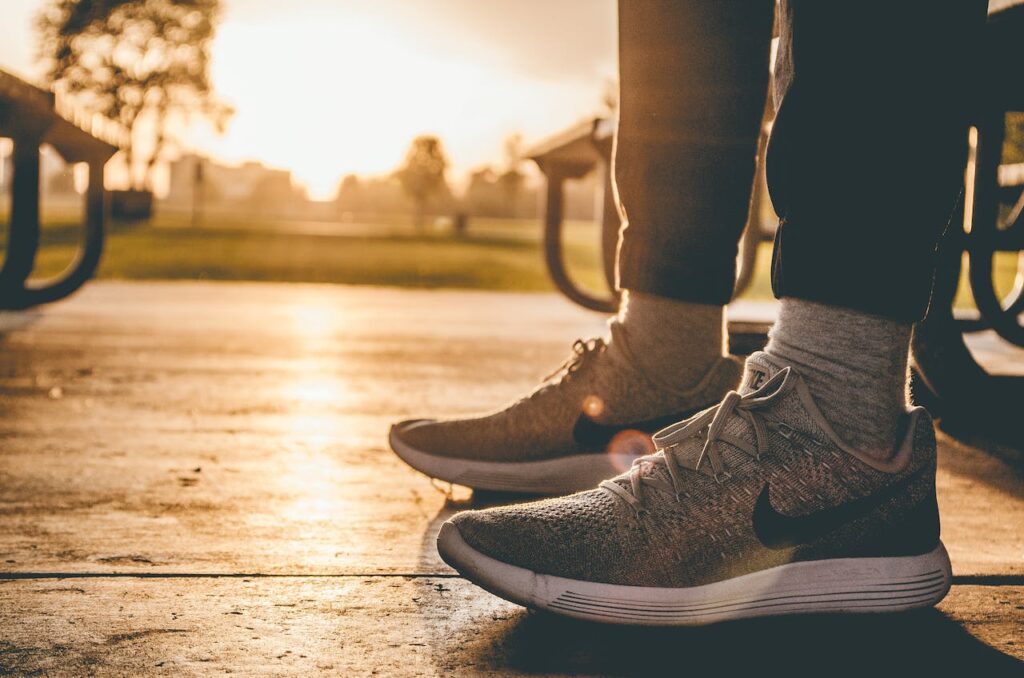Whatever type of exercise you do, it’s just as important to focus on how to do it safely and recover from it properly as it is to get the results you want.
A lot of people go running for an easy way to get some great cardio in, and there’s no denying that it can be one of the best exercises to get into, but it can also cause some problems, especially if you’re not being as careful as you should be.
Here, we’re going to look at some common injuries faced by runners, and what you can do to manage those risks.
Table of Contents
Sudden and Consistent Foot Pain
The ache of your feet’s muscles from exercise, as well as the soreness that can come from repeatedly running on them, are both to be expected.
However, if you feel a sudden or sharp pain in your heel, it may also be plantar fasciitis, one of the most common conditions affecting runners.
Some people are more likely to develop this injury, such as those with high arches in their feet or tight calf muscles. One of the best ways to avoid the risk of this injury is to ensure that you’re wearing good runner’s shoes, that offer the right combination of cushioning and support.
Plantar fasciitis usually occurs due to landing on the foot wrong, which irritates and inflames the plantar fascia.
Stress Fractures
The bones in the shins and feet can see a lot of wear and tear when running. If you take the time to gradually build up how much you run, and how intensely you do it, your bones can strengthen and be able to handle that stress.
However, a lot of people who do not give their body time to get used to new exercises can be much more prone to these fractures, making them common running injuries for those who run too much instead of building up to it.
Stress fractures are tiny cracks in the bones that are going to be uncomfortable and painful, but rest is usually enough to make them go away.
If you feel pain in your foot or shin, rest until it goes away. If it shows no sign of subsiding after a week or so, see a doctor.
Damage to the Cartilage (Runner’s Knee)
Although running is a high-impact sport, the truth is that, in most cases, it’s actually going to help improve the strength of your cartilage and strengthen your joints. However, that’s not to say that cartilage injuries aren’t prone to happen to runners.
Usually, when they do, it’s due to a mistake with your form, such as twisting your knee or turning it while you’re stepping. Cartilage damage can require surgery to fix, but rarely is it likely to require anything as extensive as a total knee replacement.
Any knee pain you feel beyond inflammation should be treated as soon as you can to avoid the damage from getting that dire.
Inflammation of the Tendons
Your tendons are the connective tissues between your muscles and they can be prone to all manner of injuries, as well.
Inflammation is particularly common with the tendons, and the Achilles tendon, in particular, is the one most likely to experience it. Achilles tendonitis is inflammation affecting this tendon, which runs from the calf to the heel.
Resting as soon as you feel pain in this tendon is a good idea, as working harder can result in a torn tendon, and that’s going to require surgery. The pain will most likely be felt at the back of the foot, above the heel, and you may feel some swelling or warmth from it, too.
Shin Splints
If you feel a sudden pain running down the front or inside of your shin, then this is what we commonly call shin splints, or medial tibial stress syndrome (MTSS).
Shin splints are common running injuries and can feel similar to a stress fracture, so they are often mistaken, but they tend to extend more alone the shin, while fractures typically feel very concentrated on a small area.
Shin splints usually happen when you suddenly up the intensity of your exercise without working your way up gradually. People who have flat feet are also more likely to develop shin splints.
They are treated by reducing your pace or the distance that you run, as well as spending more time doing stretching exercises each day, even on days you don’t run.
Damage to the IT Band
Another injury that affects the knee is the condition known as IT band syndrome, which can cause very sharp pain. This injury affects the iliotibial band, aka the IT band, which is connective tissue running along the outside of the leg, from the hip right down to the joint and shinbone.
Overuse can lead to a build-up of friction, which leads to it becoming inflamed or tight, which causes pain. The best way to prevent IT band syndrome is to ensure that you have good form while running and take the time to use a foam roller or stretching exercises to loosen up the IT band, especially while you are cooling down from a run.
Ankle Sprains
While many of the injuries mentioned above can tend to build up over time, ankle sprains usually happen very suddenly, and it’s often because you have landed on your foot wrong and rolled over your ankle.
Sometimes, there is little that you can do to avoid the injury, but it can often happen due to inattention or lost focus.
For instance, running early in the morning before you have had the chance to wake up properly can make you more prone to injuries like these.
Ankle sprains can take months to heal, so avoiding them is always the best answer, but if you do think you have sprained your ankle, aside from talking to your doctor, you might want to look at the possibility of getting some physical therapy for it.
If you run regularly, it’s vital to ensure that you’re taking heed of the advice above and doing what you can to avoid these common running injuries. Where that isn’t possible, make sure you know when to start looking for the treatment you might need.
Images from Pexels

